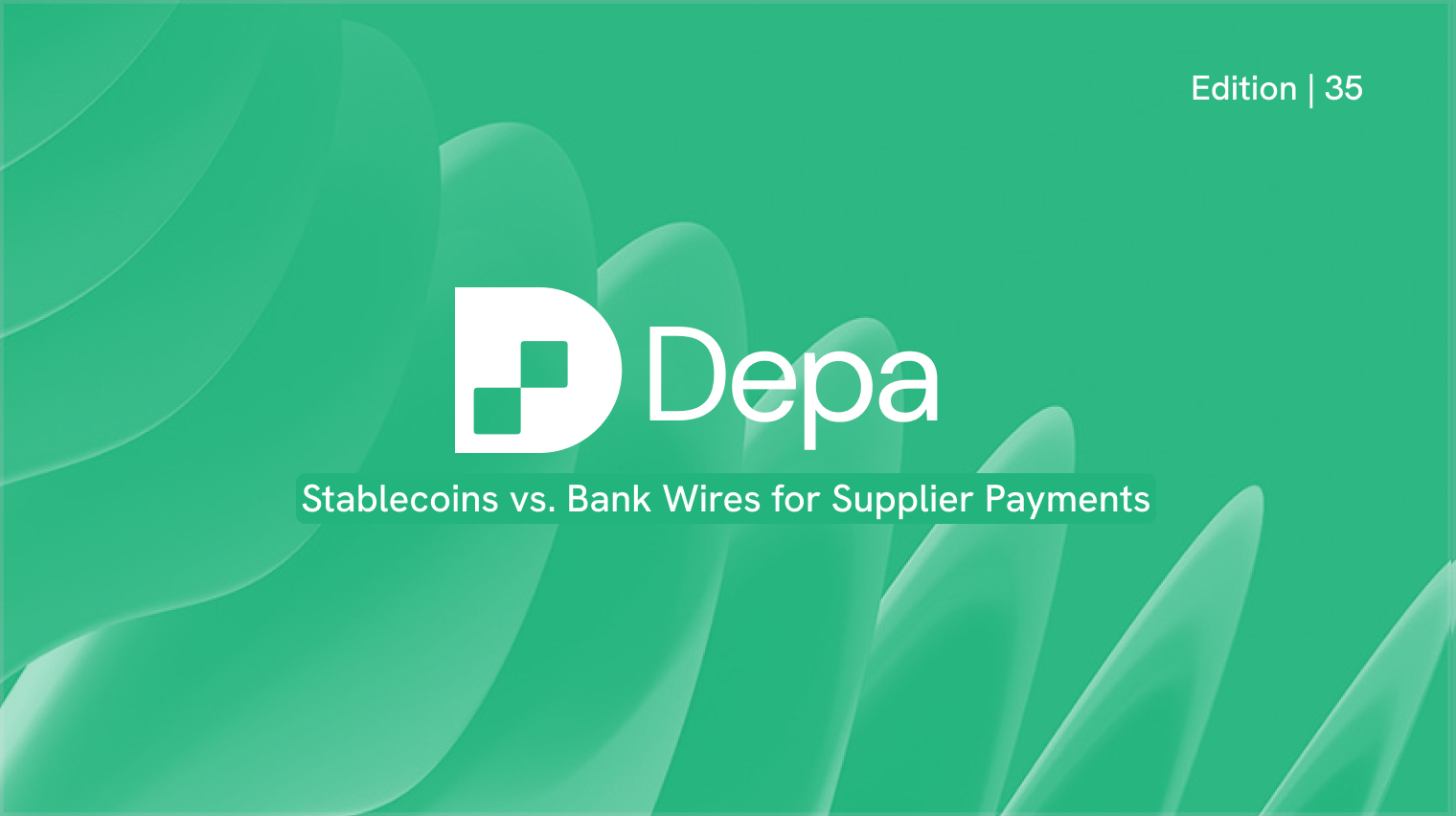
Hi Depa Digest readers! Ready to reclaim your margins? In this edition, we’ll do a deep dive on cost structures, comparing traditional bank transfers against hybrid stablecoin flows. Expect clear, side-by-side examples showing you can save up to 90% on transaction fees and reinvest those savings into growth initiatives. Let’s get into details:
Supplier payment fees, FX spreads, wire charges, correspondence fees, can consume a high percentage of each invoice amount…
In this article, we will break down the true cost components of traditional bank wires, compare them to stablecoin-based alternatives, and demonstrate how your firm can reduce fees by up to 90%.
To illustrate, here’s what a typical cross-border transfer really costs:
Below is the breakdown of each cost component you face when sending a standard SWIFT payment:
Example: Paying a $50 000 invoice via SWIFT results in $2 000 – $2 500 total fees (4% - 5%).
Now, let’s see how a stablecoin sandwich flips this script, by slicing away multiple fee layers:
Here’s what it looks like when you on-ramp to USDC, move on-chain, and off-ramp back to fiat:
Example: A $50 000 payment via USDC costs roughly $250 (0.5%), a 90% reduction.
Beyond fee savings, hybrid liquidity models also supercharge your working capital:
By combining lean bank pre-funding with on-demand stablecoin pools, you can:
With just-in-time liquidity, you free up capital to invest in growth instead of letting it sit idle.
To bring these benefits to life, here’s a side-by-side comparison:
Invoice Size: $100 000
Annual Volume: $10 million
When you’re ready to pilot, focus on:
Let’s improve your payments together :)
And now that you have got here, thank you for reading this week’s edition of Depa Digest! We really appreciate your time and commitment to staying informed on the latest news in our ecosystem. If you have any insights regarding this topic, feel free to share it with us in the comments!
This article was written by Javier Perez, Corporate Growth & Partnerships at Depa.
If you’d like to learn more about how Depa is helping to shape the future of digital asset infrastructure, visit our website at depa.finance. See you in the next edition! 🚀